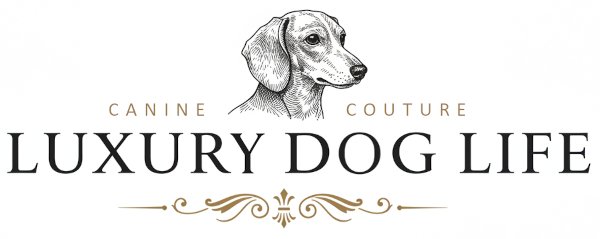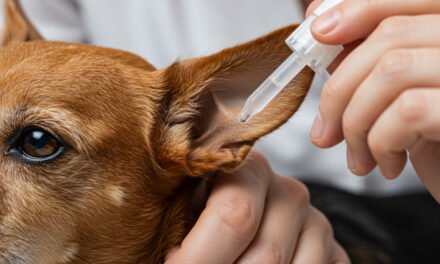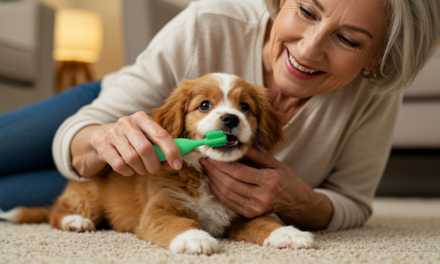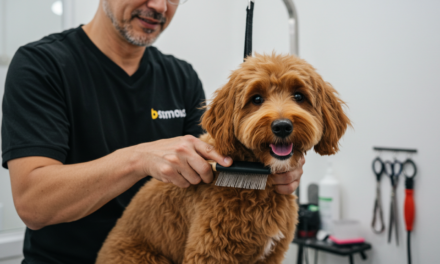Trimming your dog’s nails might seem like a small task, but it’s actually pretty important. Not only does it help keep your floors from getting scratched up, but it also keeps your pup comfy and healthy. Overgrown nails can lead to pain and even health issues down the line. If you’re new to this, don’t worry—it’s not as scary as it sounds. With the right tools and a bit of patience, you’ll be a pro in no time. Let’s walk through everything you need to know about how to cut your dog’s nails safely.
Key Takeaways
- Regular nail trimming is crucial for your dog’s health and comfort.
- Using the right tools makes the process easier and safer.
- Positive reinforcement helps your dog feel more comfortable.
- Be cautious of the quick to avoid pain and bleeding.
- If you’re unsure, consult a professional for guidance.
Understanding the Importance of Dog Nail Trimming
Why Regular Nail Trimming Matters
Alright, let’s get straight to it. Keeping our dog’s nails in check isn’t just about looking good. It’s about health and happiness. Regular nail trimming is like a mini spa day that keeps our furry pals feeling their best. When nails get too long, they can mess with how our dogs walk, and nobody wants a limping pooch, right?
Health Risks of Overgrown Nails
Now, you might be thinking, "What’s the big deal if Fido’s nails are a bit long?" Well, overgrown nails can lead to some nasty stuff. We’re talking about pain, infections, and even permanent damage to their paws. Imagine trying to walk with a pebble in your shoe all day. That’s what it’s like for them! Long nails can also curl into the paw pads, which is as painful as it sounds.
How Nail Length Affects Your Dog’s Comfort
Let’s be honest, no one likes being uncomfortable, and our dogs are no different. When their nails are too long, it changes how they stand and walk. This can lead to joint pain and even arthritis over time. Plus, long nails can get caught on things, which is never fun. Keeping them trimmed means our dogs can run, jump, and play without a care in the world. And isn’t that what we all want for them?
Choosing the Right Tools for Trimming Dog Nails
When it comes to trimming our dog’s nails, having the right tools can make all the difference between a smooth experience and a stressful one. Let’s dive into the toolset that will make you a nail-trimming pro!
Different Types of Nail Clippers
Nail clippers come in various styles, each suited for different dog sizes and nail types.
- Scissor Clippers: Ideal for small dogs, these look just like regular scissors but have notches to hold the nail securely. They’re perfect for those tiny, delicate nails that need a gentle touch.
- Plier-Style Clippers: If you’ve got a larger dog, these are your go-to. With a heavy-duty spring, they pack the punch needed to cut through thick nails.
- Guillotine Clippers: Slide your dog’s nail into a small hole, and a blade slices through. While they stay sharp longer, they can be tricky—especially if you’re trying to avoid the quick.
Benefits of Using a Nail Grinder
Now, if your dog has dark nails or if you’re just plain nervous about clipping, a nail grinder might be your new best friend. Grinders file the nail down gradually, making it easier to steer clear of the quick. Plus, they leave the nails smooth, which means fewer scratches when your pup jumps up to greet you.
Essential Accessories for Safe Trimming
Besides the main tools, a few accessories can make the process safer and more pleasant:
- Styptic Powder: Accidents happen. This powder stops bleeding fast if you accidentally nick the quick.
- Dog Treats: Keep these handy to reward your pup and make the experience positive.
- A Friend’s Helping Hand: Sometimes, an extra pair of hands can help keep your dog calm and still.
Trimming your dog’s nails doesn’t have to be a dreaded task. With the right tools and a little patience, we can turn it into a bonding experience.
Preparing Your Dog for a Nail Trim

Trimming our dog’s nails can feel like a daunting task, but it doesn’t have to be. With the right prep work, we can make it a much smoother experience for both us and our furry pals.
Creating a Calm Environment
First things first, let’s talk about setting the scene. We need a relaxed, well-lit space where our pup feels safe. It’s like setting up a spa day—minus the cucumber slices. A quiet room with no sudden noises or distractions is ideal. This way, our dog isn’t on edge, and we can focus on the task at hand.
Familiarizing Your Dog with the Tools
Before we even think about clipping, let’s get our pup used to the tools. We can start by letting them sniff the clippers or grinder. Maybe even give them a little treat afterward. It’s all about building a positive association. Imagine the clippers as a new toy—the more they see it, the less scary it becomes.
Using Treats and Praise for Positive Reinforcement
Let’s face it, who doesn’t love a good treat? Our dogs are no different. Every time they let us touch their paws or even just stay calm, they deserve a little reward. It’s like training them to associate nail trimming with something good. A small treat or a lot of praise can go a long way.
Remember, patience is key. If our pup is nervous, it’s okay to take it slow. We’re in this together, and with a little time, nail trimming can become just another part of our routine.
Incorporating regular grooming into our dog’s life not only keeps them healthy but also strengthens our bond with them. So, let’s grab those clippers and make it a positive experience for everyone involved!
Step-by-Step Guide to Trimming Your Dog’s Nails

Positioning Your Dog Correctly
Alright, let’s get comfy! First things first, we’ve got to get our furry friend into a position that’s both cozy and safe. Imagine trying to get a squirmy toddler to sit still for a haircut—yep, that’s the vibe. We want our dog relaxed, so maybe even a little tired from playtime. A good spot? Anywhere with good lighting where they feel secure, like their favorite lounging area. Keep those paws close to the ground to avoid any awkward leg lifts. Trust me, no one wants to do doggy yoga here.
Identifying the Quick
Here’s where things get a bit technical, but don’t worry, we’ve got this! The quick is that sneaky little blood vessel hiding inside the nail. In dogs with lighter nails, it’s that pinkish line you can see. For darker nails, it’s a bit of a guessing game. We trim slowly, looking for a small black dot in the center of the nail—stop there! Cutting the quick is a no-go because it’s painful and can bleed. So, slow and steady wins this race.
Proper Cutting Techniques
Now, the main event! Grab those clippers or grinder, whichever you’re more comfortable with. Here’s the trick: Cut at a 45-degree angle, not straight across. This helps avoid the quick and keeps the nail parallel to the floor. Start with tiny snips, or if you’re grinding, use gentle pressure. And hey, don’t forget the dewclaws! These little guys are often overlooked, but they need trimming too. If you’re using a grinder, remember to keep fur away from the tool to avoid any tangles.
Trimming your dog’s nails isn’t just about keeping them looking sharp—it’s about their comfort and health. So let’s make it a positive experience for both of us!
How to Handle Black or Dark Nails
Tips for Spotting the Quick
Alright, folks, let’s talk about the challenge of trimming those mysterious black or dark nails. Unlike lighter nails, where you can see the pink quick clearly, dark nails are more of a guessing game. So, how do we tackle this?
- Start Small: Trim just a tiny bit at a time. You want to be cautious and avoid hitting the quick.
- Look for the Dot: As you trim, keep an eye out for a small black dot in the center of the nail. That’s your sign to stop because you’ve reached the quick.
- Use Good Lighting: Natural light is your friend here. It helps you see the subtle changes in the nail as you trim.
Using a Grinder for Dark Nails
Now, if you’re feeling a bit nervous about trimming dark nails, a nail grinder can be a lifesaver. Grinders let you slowly sand down the nail, giving you more control and precision.
- Gentle Pressure: Use light to medium pressure and take your time. Grinders can be a bit noisy, so it might take a session or two for your pup to get used to it.
- Check Frequently: Regularly check the nail to see how close you are to the quick. This way, you can stop before any accidents happen.
- Safety First: Make sure to keep your dog’s fur away from the grinder to avoid any tangles.
When to Seek Professional Help
Hey, sometimes it’s best to leave it to the pros. If you’re unsure or your dog is super squirmy, a professional groomer can be a great option.
- Peace of Mind: A groomer has the experience and tools to handle even the trickiest nails.
- Regular Visits: Consider scheduling regular visits to keep those nails in check.
Remember, keeping your dog’s nails trimmed is part of creating a safe home environment. It prevents discomfort and potential injuries. So, whether you DIY or get a pro’s help, the goal is happy, healthy paws.
And there you have it! Tackling dark nails doesn’t have to be daunting. With patience and the right approach, we can keep those paws looking sharp (but not too sharp!).
Dealing with Accidents: What to Do If You Cut the Quick
Stopping the Bleeding Quickly
Alright, so we’ve all been there. You’re trimming your dog’s nails and suddenly, yikes! You’ve cut the quick. Don’t panic! It happens to the best of us. The quick is the sensitive part of the nail, filled with nerves and blood vessels, so it’s no wonder your pup might yelp a bit when it’s nicked. Here’s what we do: Grab some styptic powder, which is like a magic dust for stopping the bleeding. If you don’t have any on hand, no worries! You can also use cornstarch or flour. Just press it gently onto the nail for a few seconds, and voilà, the bleeding should stop.
Keeping Your Dog Calm
When accidents happen, it’s not just about stopping the bleeding; it’s also about keeping our furry friend calm. Imagine someone accidentally stepping on your toe—ouch, right? Our dogs feel the same way. Speak to them in a soothing voice, give them a gentle pat, and maybe offer a treat to distract them from the mishap. It’s amazing what a little love and a tasty snack can do to ease their nerves.
Preventing Future Accidents
Let’s be real, none of us want to repeat this nail-trimming drama. So, how do we avoid it next time? Well, the trick is to trim little by little. With dark nails, it’s especially tricky since the quick isn’t visible. Take it slow and look for a small black dot in the center of the nail—this is your signal to stop. And remember, practice makes perfect! Over time, we’ll get more confident and so will our dogs. Also, keeping styptic powder handy is always a good idea, just in case. Happy trimming!
Incorporating Nail Trimming into Your Dog’s Routine
How Often to Trim Your Dog’s Nails
Alright, let’s chat about how often we should be trimming our furry friend’s nails. It’s not a one-size-fits-all kind of deal. Some dogs are like little nail-growing machines that need a trim every couple of weeks, while others can go a bit longer. A good rule of thumb is to give those nails a check every 3 to 4 weeks. If they’re clicking on the floor like tap shoes, it’s time for a trim!
Signs Your Dog Needs a Trim
So, how do we know when it’s time to grab the clippers? Well, besides the obvious tap dance routine on your hardwood floors, there are a few telltale signs. If your pup is slipping and sliding more than usual, or if their nails are starting to curl under their paws, it’s definitely time for a trim. And let’s be honest, nobody wants to deal with a grumpy dog because their nails are causing discomfort.
Making Nail Trimming a Positive Experience
Now, let’s talk about making this whole nail-trimming gig a bit more bearable for everyone involved. Positive reinforcement is key. We’re talking treats, belly rubs, and maybe even a little doggy spa day afterward. The goal is to make nail trimming something your dog can look forward to. It’s like when we were kids and got a lollipop after a doctor’s visit. Also, don’t forget to check out the importance of proper dental care for dogs to keep them healthy and happy.
"Incorporating nail trimming into your dog’s routine can be as simple as setting a reminder on your phone. Consistency is key, and before you know it, it’ll just be another part of your routine, like morning coffee or binge-watching your favorite show."
Remember, patience is a virtue, especially when it comes to trimming those little claws. So, take it slow, keep it positive, and soon enough, your dog might even start looking forward to their mini-pedicure sessions.
Special Considerations for Puppies and Senior Dogs

When it comes to trimming nails, puppies and senior dogs require a bit of extra care. Their needs are different, and understanding these differences can make the process smoother for both you and your furry friend.
Introducing Puppies to Nail Trimming
Puppies are like little sponges, soaking up experiences, both good and bad. So, when we introduce them to nail trimming, we want to make it a positive experience. Start slow and keep it fun.
- Get them used to the tools. Let them sniff and explore the clippers or grinder before you even attempt to use them.
- Make it a game. Use treats and praise to build positive associations.
- Keep sessions short. Puppies have short attention spans, so patience is key.
Adjusting Techniques for Older Dogs
Senior dogs might need a gentler touch. Their nails can be more brittle, and they might have some arthritis or joint pain.
- Use a nail grinder instead of clippers if your senior dog is comfortable with the noise. It’s less pressure on their paws.
- Trim little and often. Regular small trims can be more comfortable than one big session.
- Be gentle and patient. Older dogs might be a bit more anxious, so take your time.
Handling Anxious or Fearful Dogs
Some dogs, regardless of age, just don’t like getting their nails trimmed. It’s like us avoiding the dentist!
- Create a calm environment. Choose a quiet space where your dog feels safe.
- Use calming aids if necessary. Sometimes a calming spray or a thunder shirt can help.
- Don’t force it. If they’re too stressed, it might be best to seek professional help.
Trimming your dog’s nails doesn’t have to be a battle. With a bit of patience and understanding, we can make it a stress-free experience for everyone involved.
Common Mistakes to Avoid When Trimming Dog Nails
Cutting Too Close to the Quick
We’ve all been there—trying to give our furry friend a nice pedicure and suddenly, ouch! We’ve hit the quick. Cutting too close to the quick is a common mistake, and trust me, your dog will let you know if you’ve gone too far. The quick is the sensitive part of the nail that contains nerves and blood vessels, so it’s important to avoid it at all costs. For nails that are white, you can usually see the pink quick and steer clear. But for those tricky black nails, it’s best to trim a little at a time and look for a chalky white center. That’s your cue to stop.
Skipping the Dewclaws
Ever notice those little claws on the side of your dog’s legs? Yep, those are dewclaws, and they often get forgotten. Skipping the dewclaws can lead to them curling back into the skin, which is uncomfortable and can cause infections. So, make sure to check all four paws for these sneaky little nails. Some breeds even have double dewclaws, so a thorough check is key.
Using the Wrong Tools
Using the wrong tools can make nail trimming a nightmare, both for you and your dog. Ever tried using human nail clippers on your pooch? Big mistake! Dog nails are tougher and require proper clippers or a grinder. A nail grinder is especially handy for smoothing out rough edges and is a safer option if you’re nervous about cutting too much. Remember, the right tools make all the difference in keeping your dog comfortable and the process stress-free.
Nail trimming can be a daunting task, but with the right approach and tools, it becomes just another part of your routine. Let’s make it a positive experience for both us and our four-legged pals!
Alternatives to Traditional Nail Trimming
Okay, folks, let’s talk alternatives. We all know that trimming our dog’s nails isn’t always a walk in the park. Sometimes, it feels like we’re wrestling a tiny bear! So, what can we do if the classic nail clippers just aren’t cutting it (pun intended)?
Using Nail Caps
Ever heard of nail caps? These little lifesavers are like tiny rubber shoes for your dog’s nails. They’re super easy to apply, and they can prevent your pup from scratching up your favorite couch. Plus, they come in all sorts of fun colors. It’s like a mini manicure for your dog! Just remember, while they’re great for protecting your floors and furniture, they don’t actually shorten the nails.
Professional Grooming Services
Let’s be real for a second. Sometimes, it’s just easier to let the pros handle it. Professional groomers have all the tools and tricks up their sleeves to make nail trimming a breeze. Plus, they know how to keep your dog calm and happy during the process. It’s like a spa day for your pup! If you’re feeling stressed about nail trims, this might be the way to go.
Natural Ways to Keep Nails Short
Did you know that regular walks on hard surfaces can naturally wear down your dog’s nails? It’s true! Taking your dog for a stroll on the sidewalk not only gives them some much-needed exercise but also helps keep those nails in check. It’s a win-win! Just make sure to keep an eye on the weather—no one wants to walk on hot pavement.
Sometimes, the best solutions are the simplest ones. By incorporating natural ways like regular walks, we can keep our dogs happy and healthy without the fuss of clippers.
And there you have it! Whether you’re trying out nail caps, visiting a groomer, or just taking more walks, there are plenty of options to keep those nails in tip-top shape. So, let’s make nail trimming a little less daunting and a lot more fun!
Frequently Asked Questions About Dog Nail Trimming

Ever hear that "clickety-clack" as your dog prances across the kitchen floor? That’s a telltale sign those nails might be a bit too long. Ideally, your dog’s nails shouldn’t touch the ground when they’re standing still. If they do, it’s time to grab those clippers.
Can I Use Human Nail Clippers?
We’ve all been there, rummaging through the drawer for the dog clippers and coming up empty. While it might be tempting to use human nail clippers, they’re not really up to the task. Dog nails are thicker and tougher, so it’s best to stick with clippers designed for dogs. Trust us, it’ll save you a headache.
What If My Dog Hates Nail Trimming?
Oh boy, if we had a treat for every time we’ve heard this one! Some dogs just aren’t fans of nail trims. The trick is patience and a whole lot of positive reinforcement. Regularly touch their paws and legs to get them used to the sensation. Introduce them to the nail clipper or grinder in a calm environment with good lighting. And don’t forget the treats and praise! If all else fails, it might be time to call in a professional groomer.
Wrapping It Up: Nail Trimming Made Simple
So there you have it, folks! Trimming your dog’s nails doesn’t have to be a daunting task. With a bit of patience, the right tools, and some tasty treats, you can keep your pup’s paws in tip-top shape. Remember, practice makes perfect, and it’s okay if it takes a few tries to get comfortable. Keep calm, stay positive, and your furry friend will soon see nail trimming as just another part of their pampering routine. Happy trimming!
Frequently Asked Questions
How can I tell if my dog’s nails are too long?
If you hear your dog’s nails clicking on the floor when they walk, it’s time for a trim. Nails should not touch the ground when your dog is standing.
Is it okay to use human nail clippers on my dog?
It’s not recommended to use human nail clippers on dogs. Dog nail clippers are specially designed to handle the thickness and shape of dog nails safely.
What if my dog really hates getting their nails trimmed?
Try to make the experience positive with treats and praise. Start slowly, and consider using a nail grinder. If it’s still a problem, consult a professional groomer or vet.
How often should I trim my dog’s nails?
Most dogs need a nail trim every 3-4 weeks, but it can vary based on their activity level and where they walk.
What should I do if I accidentally cut the quick?
Stay calm and apply styptic powder or cornstarch to stop the bleeding. Offer comfort to your dog and try to be more cautious next time.
Can I use a nail grinder instead of clippers?
Yes, nail grinders are a good alternative, especially for dogs who dislike clippers. They can provide a smoother finish and reduce the risk of cutting the quick.
Do all dogs have dewclaws?
Not all dogs have dewclaws, but many do. They are located on the inner side of the paw and need regular trimming just like other nails.
When should I seek professional help for nail trimming?
If you’re unsure, nervous, or if your dog is very anxious or aggressive during trims, it’s best to seek help from a vet or professional groomer.










